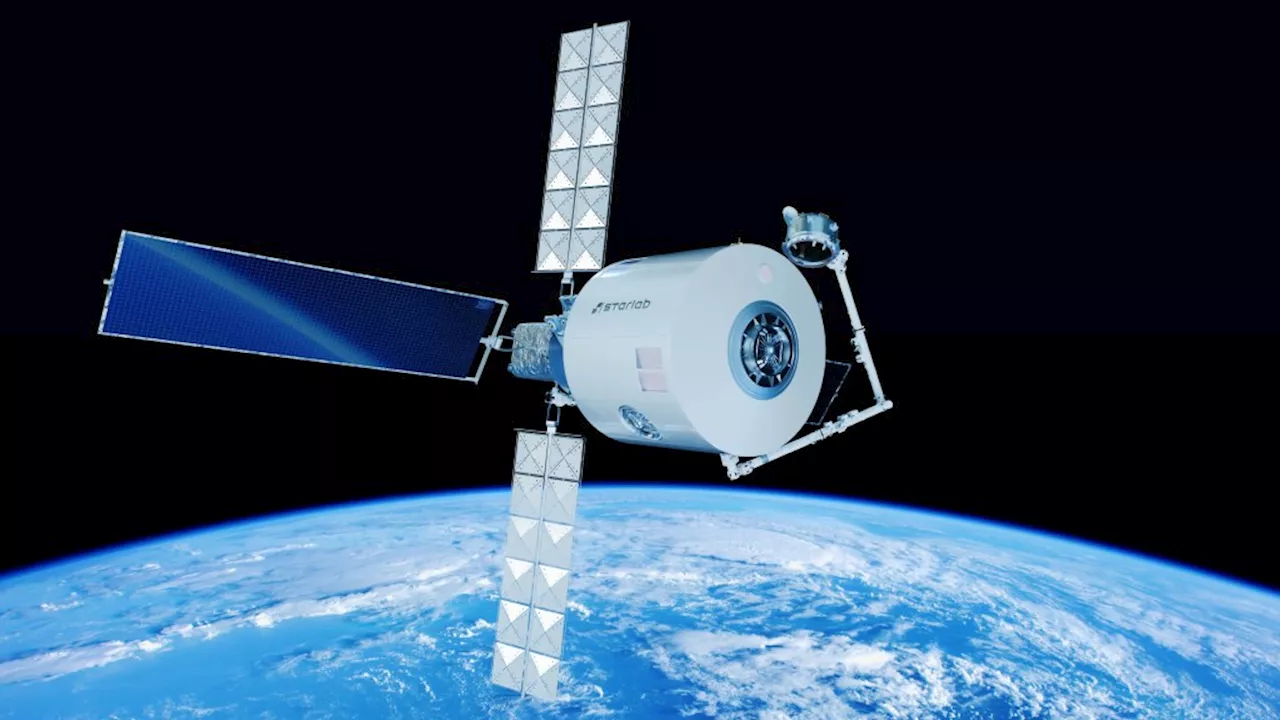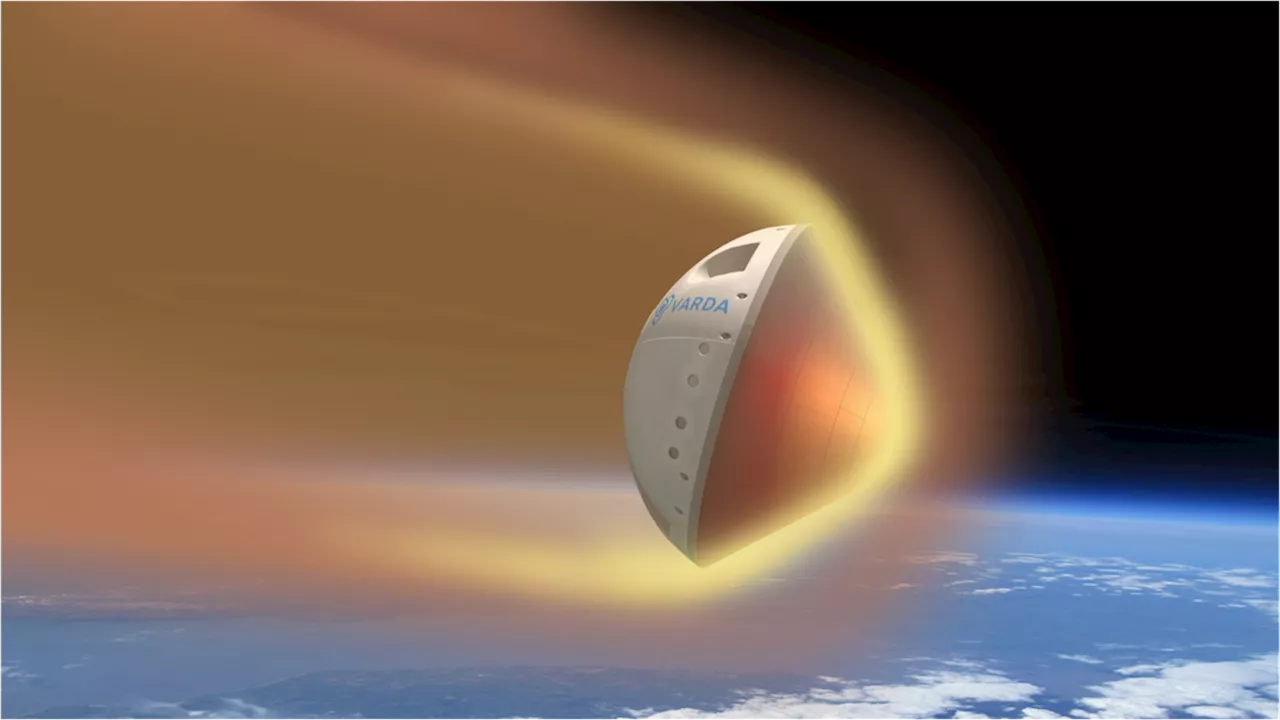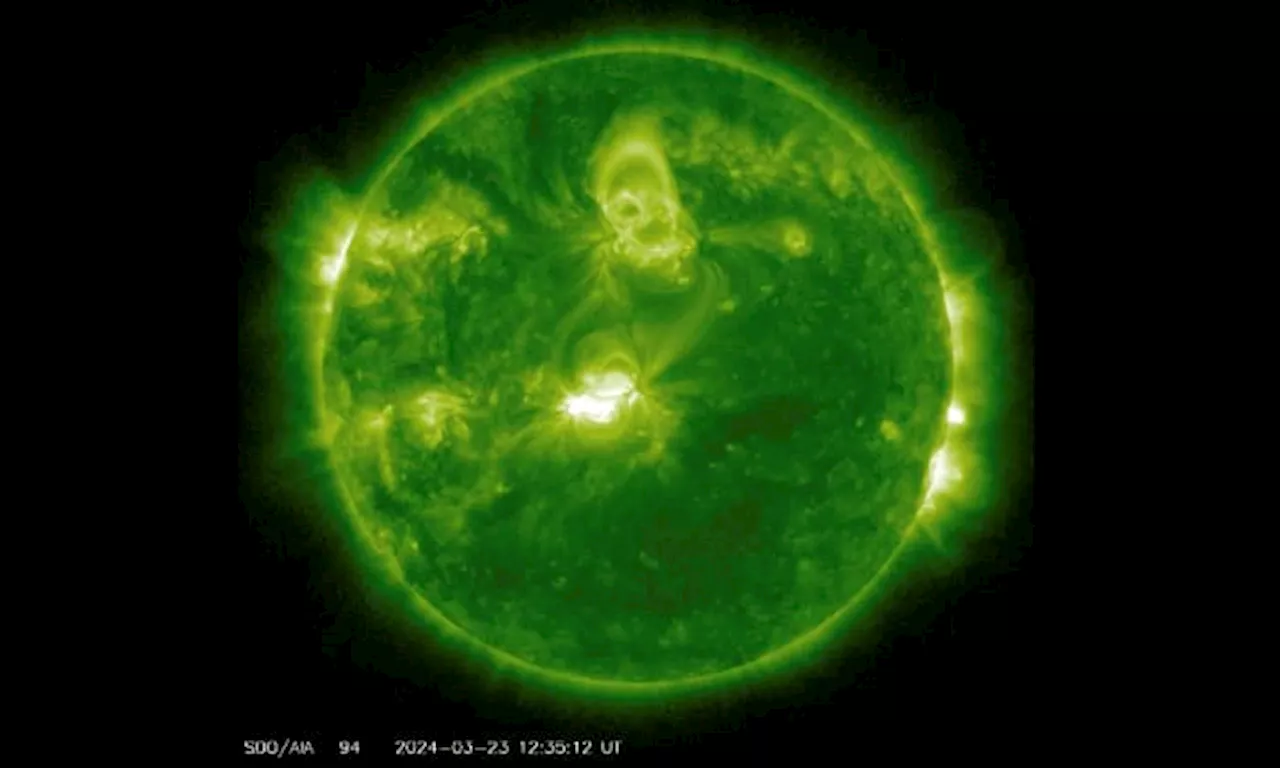Space weather forecasters have issued a geomagnetic storm watch through Monday.
This image provided by NASA shows the Sun seen from the Solar Dynamics Observatory satellite on Saturday, March 23, 2024. Space weather forecasters have issued a geomagnetic storm watch through Monday, March 25, 2024, saying an ouburst of plasma from a solar flare could interfere with radio transmissions on Earth and make for great aurora viewing.
Satellite operators might have trouble tracking their spacecraft, and power grids could also see some “induced current” in their lines, though nothing they can't handle, he said. “For the general public, if you have clear skies at night and you are at higher latitudes, this would be a great opportunity to see the skies light up,” Lash said.
Every 11 years, the sun's magnetic field flips, meaning its north and south poles switch positions. Solar activity changes during that cycle, and it's now near its most active, called the solar maximum. During such times, geomagnetic storms of the type that arrived Sunday can hit Earth a few times a year, Lash said. During solar minimum, a few years may pass between storms.Copyright 2024 The Associated Press. All rights reserved. This material may not be published, broadcast, rewritten or redistributed without permission.
United States Latest News, United States Headlines
Similar News:You can also read news stories similar to this one that we have collected from other news sources.
 Geomagnetic storm from a solar flare could disrupt radio communications and create a striking auroraSpace weather forecasters have issued a geomagnetic storm watch through Monday
Geomagnetic storm from a solar flare could disrupt radio communications and create a striking auroraSpace weather forecasters have issued a geomagnetic storm watch through Monday
Read more »
 Geomagnetic storm from a solar flare could disrupt radio communications and create a striking auroraSpace weather forecasters have issued a geomagnetic storm watch through Monday.
Geomagnetic storm from a solar flare could disrupt radio communications and create a striking auroraSpace weather forecasters have issued a geomagnetic storm watch through Monday.
Read more »
 Geomagnetic storm from a solar flare could disrupt radio communications and create a striking auroraSpace weather forecasters have issued a geomagnetic storm watch through Monday. They say a plasma burst from a solar flare could interfere with radio transmissions on Earth. It may also make for great aurora viewing. According to the alert issued Saturday by NOAA’s Space Weather Prediction Center, there's no reason for concern.
Geomagnetic storm from a solar flare could disrupt radio communications and create a striking auroraSpace weather forecasters have issued a geomagnetic storm watch through Monday. They say a plasma burst from a solar flare could interfere with radio transmissions on Earth. It may also make for great aurora viewing. According to the alert issued Saturday by NOAA’s Space Weather Prediction Center, there's no reason for concern.
Read more »
 Colorado-based companies Voyager Space, Palantir join forces on national security work in spaceDenver-based companies Voyager Space and Palantir Technologies have signed an agreement to work together on enhancing national security capabilities in the commercial space realm.
Colorado-based companies Voyager Space, Palantir join forces on national security work in spaceDenver-based companies Voyager Space and Palantir Technologies have signed an agreement to work together on enhancing national security capabilities in the commercial space realm.
Read more »
 45 Years Ago: Space Shuttle Columbia Arrives at NASA’s Kennedy Space CenterOn March 24, 1979, space shuttle Columbia arrived at NASA’s Kennedy Space Center (KSC) for the very first time. Following Presidential direction to build the
45 Years Ago: Space Shuttle Columbia Arrives at NASA’s Kennedy Space CenterOn March 24, 1979, space shuttle Columbia arrived at NASA’s Kennedy Space Center (KSC) for the very first time. Following Presidential direction to build the
Read more »
 Private Varda Space capsule returns to Earth with space-grown antiviral drug aboardMichael Wall is a Senior Space Writer with Space.com and joined the team in 2010. He primarily covers exoplanets, spaceflight and military space, but has been known to dabble in the space art beat. His book about the search for alien life, 'Out There,' was published on Nov. 13, 2018.
Private Varda Space capsule returns to Earth with space-grown antiviral drug aboardMichael Wall is a Senior Space Writer with Space.com and joined the team in 2010. He primarily covers exoplanets, spaceflight and military space, but has been known to dabble in the space art beat. His book about the search for alien life, 'Out There,' was published on Nov. 13, 2018.
Read more »
